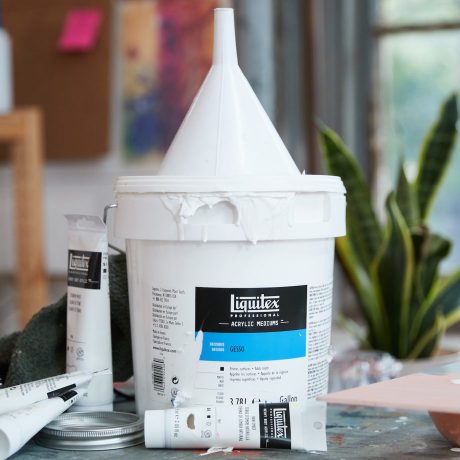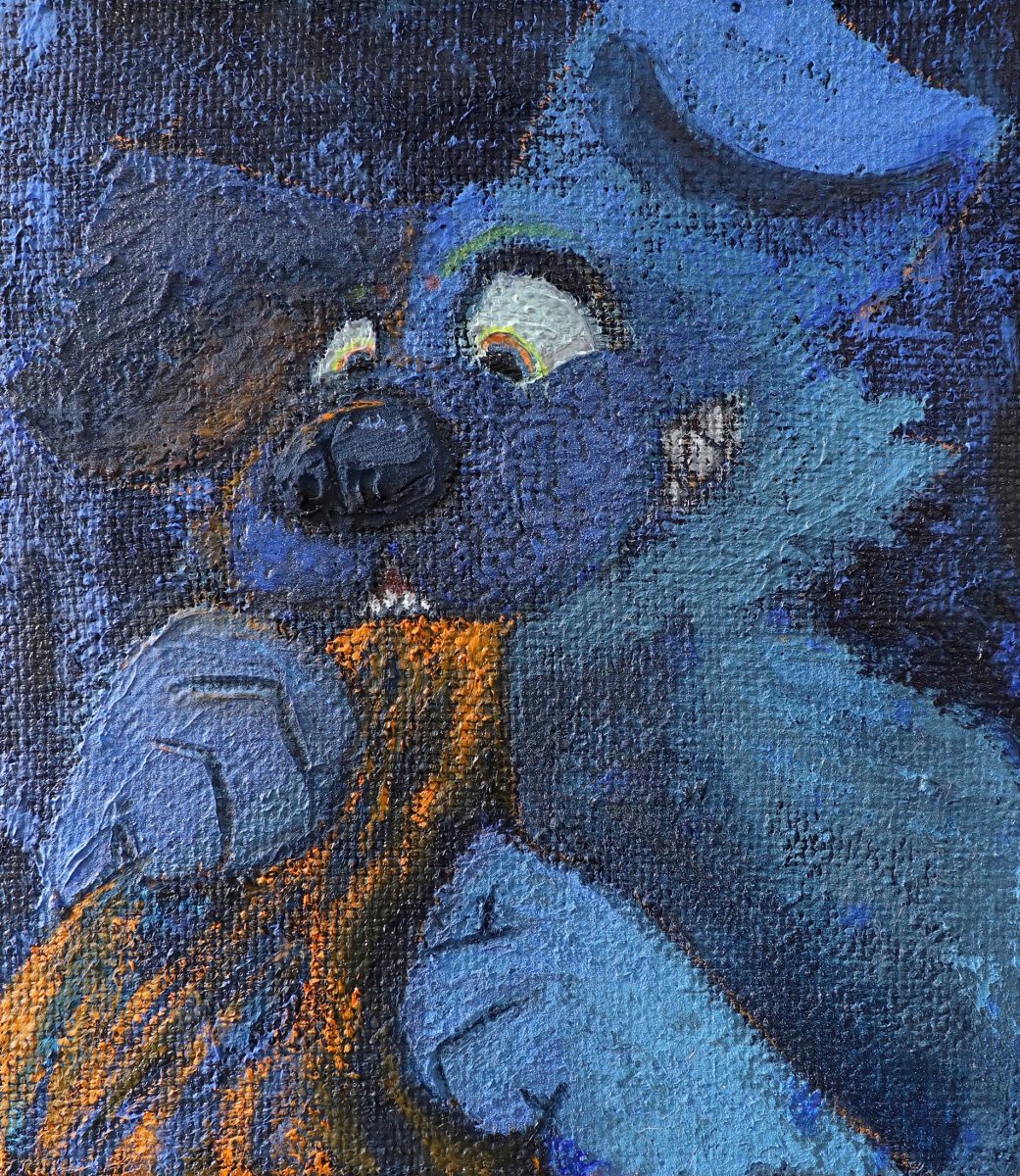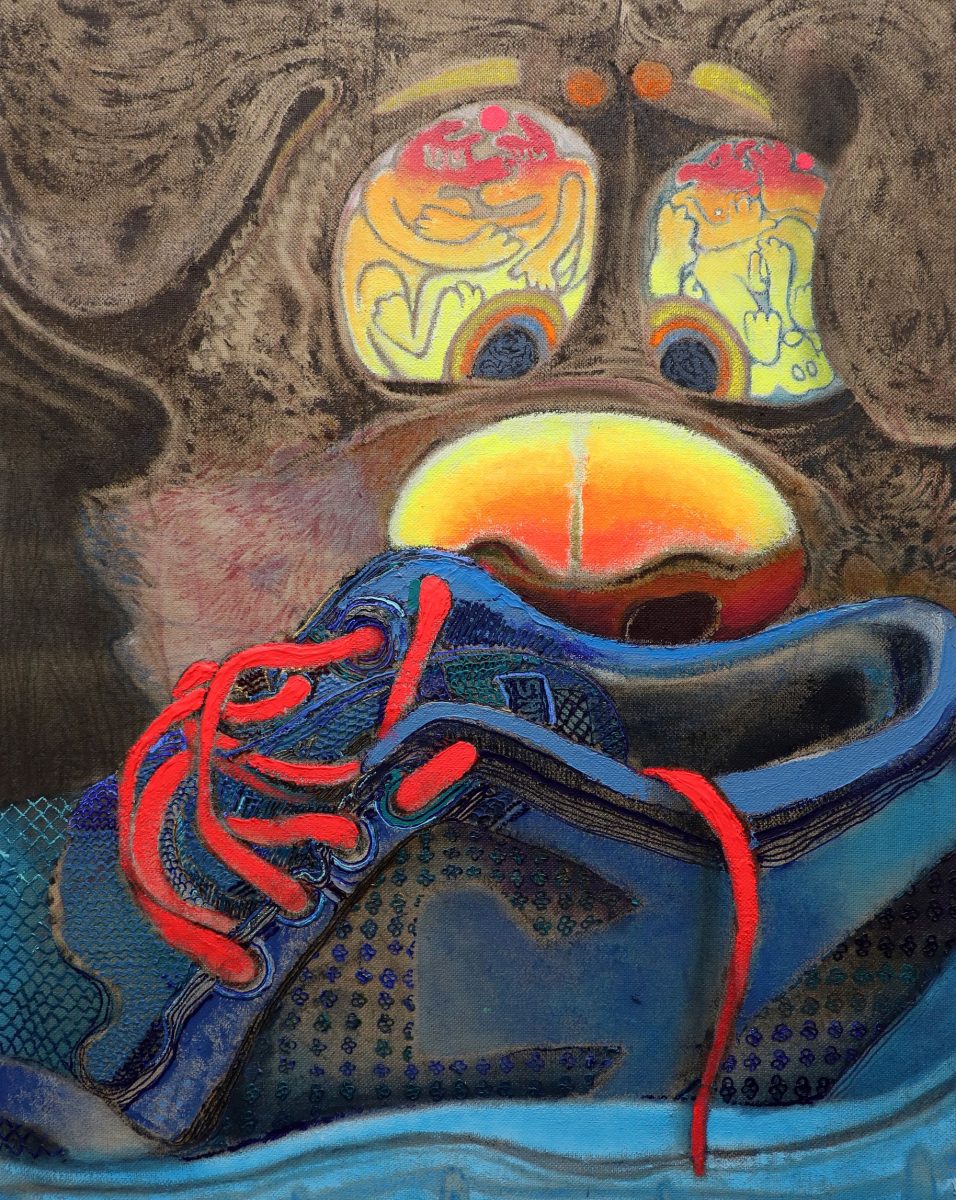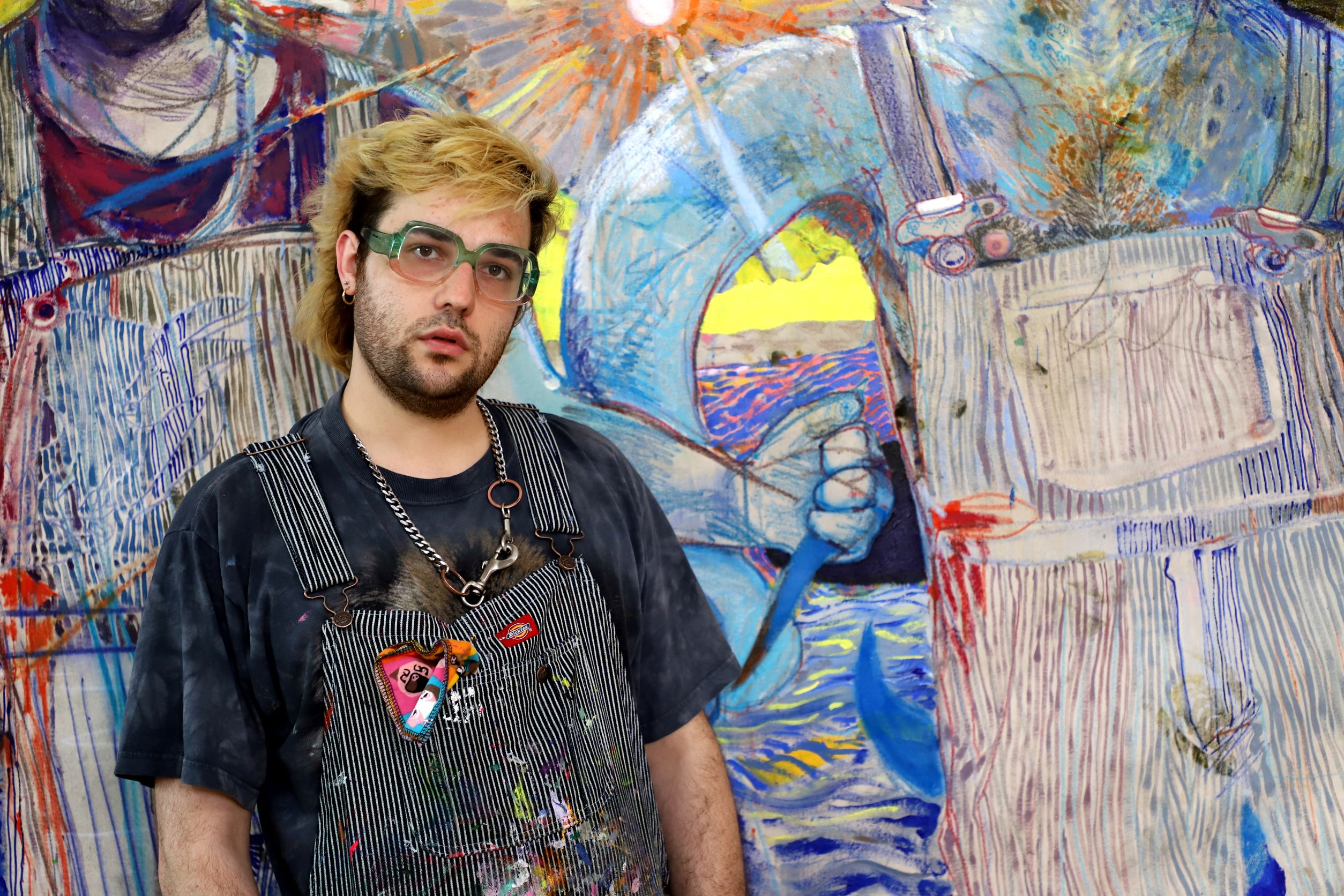
Anthropomorphic dogs fill the playful, energetic canvases of Mark Zubrovich. Playful pups bulge in tight jeans, sniff hungrily at the air around them and sometimes morph with inanimate objects such as toilet roll and fashion items. Dog-human hybrids often fill entire paintings, larger than life and slightly too close for comfort. Sometimes the viewer just sees the massive underside of a stomping dog paw or the close-up of exaggerated neon eyes and snouts.
Zubrovich’s painting style is both celebratory and subversive. The dogs are a clear nod to queer culture, with leather, studs and collars abounding. They also reference furry subculture, bringing together the sexual and snuggly in one untangleable whole. Viewers might find moments of solace and discomfort in the works, which prod at cultural taboos in an undeniably friendly fashion.
The limits of acceptability are pushed in these works, asking the viewer to question which bodies are deemed safe and tolerable, and which are not. They are also a vehicle for the artist to examine his own relationship with his body, touching on issues of sickness and trust.
Zubrovich has just completed a residency with Liquitex, expanding on his vibrant colour palette with fluorescent paints while exploring texture with the use of course mediums and sand.

What have you been working on during your Liquitex residency?
I’m a figurative painter making work about the queer body. My vehicle is anthropomorphism, with most of my figures being a mix of dog and human features. I’ve been thinking a lot about our bodies and how we take on the world with them despite their flaws. Particularly, how I can begin making work about my own bodily experience through that doggy lens?
How did you develop the idea for this body of work?
I lost a good chunk of my sense of smell to COVID in 2020, along with a bunch of other conditions that have affected the trust I have in my own body. So I’ve been making these paintings about heightened sensory stimuli. The intensity of smelling and hearing, walking and licking. If I can’t sniff to my heart’s content, I’m letting my dogs sniff for me.
“I’ve always dreamed of doing painted marble pieces and metal casting à la Rodin: some sort of monumental bronze doggy figures”
Which art materials have you particularly enjoyed working with?
I’ve been working on jute, this super-thick-weave linen that fights and claws at every mark you put on the surface. But the finish it provides, especially when mixing paint with sand and coarse mediums, gives the work a texture that makes you desperate to rake your fingers across it. The paintings become wildly multisensory with this surface. It also reeks of burlap.
I was really surprised at how much fluorescent paints infected my work. They became a vehicle for expressing, in colour and texture, the motions of living in a body. This connects with the vibration in a dogs hearing, or the brain fuzz from smelling something that evokes memory.
If you had no financial constraints, what other materials you would love to try out?
I’ve dipped my toe several times into sculpture and costume. I’d really love to expand outward into that. I’ve always dreamed of doing painted marble pieces and metal casting à la Rodin: some sort of monumental bronze doggy figures. I’m desperately itching to make a full bodysuit to wear and perform in as well, but all that faux fur comes with a hefty price tag.
“My vehicle is anthropomorphism, with most of my figures being a mix of dog and human features”
Who are some of the artists who have inspired you?
I’m very much inspired by art history’s scenes of mythology and allegory, with painters like Landseer and Rubens becoming literal templates for paintings. They’re such fantastic vessels for queer thought. I’m also heavily inspired by the art of contemporary subculture, with spaces like the furry community having as much impact on the work as those old masters.
My first queer art loves were Keith Haring, David Wojnarowicz and General Idea. I remember going to the Whitney Museum in New York as a teenager, still deep in the closet, and seeing an exhibit on the gay scene in NYC in the 1980s. All those dead artists. It filled me with a sense of both anger and fear, but also purpose and understanding. That queer history has been written by those who knew how feverishly the ones in power want to stomp us out. That art is a stopgap against cultural extinction.
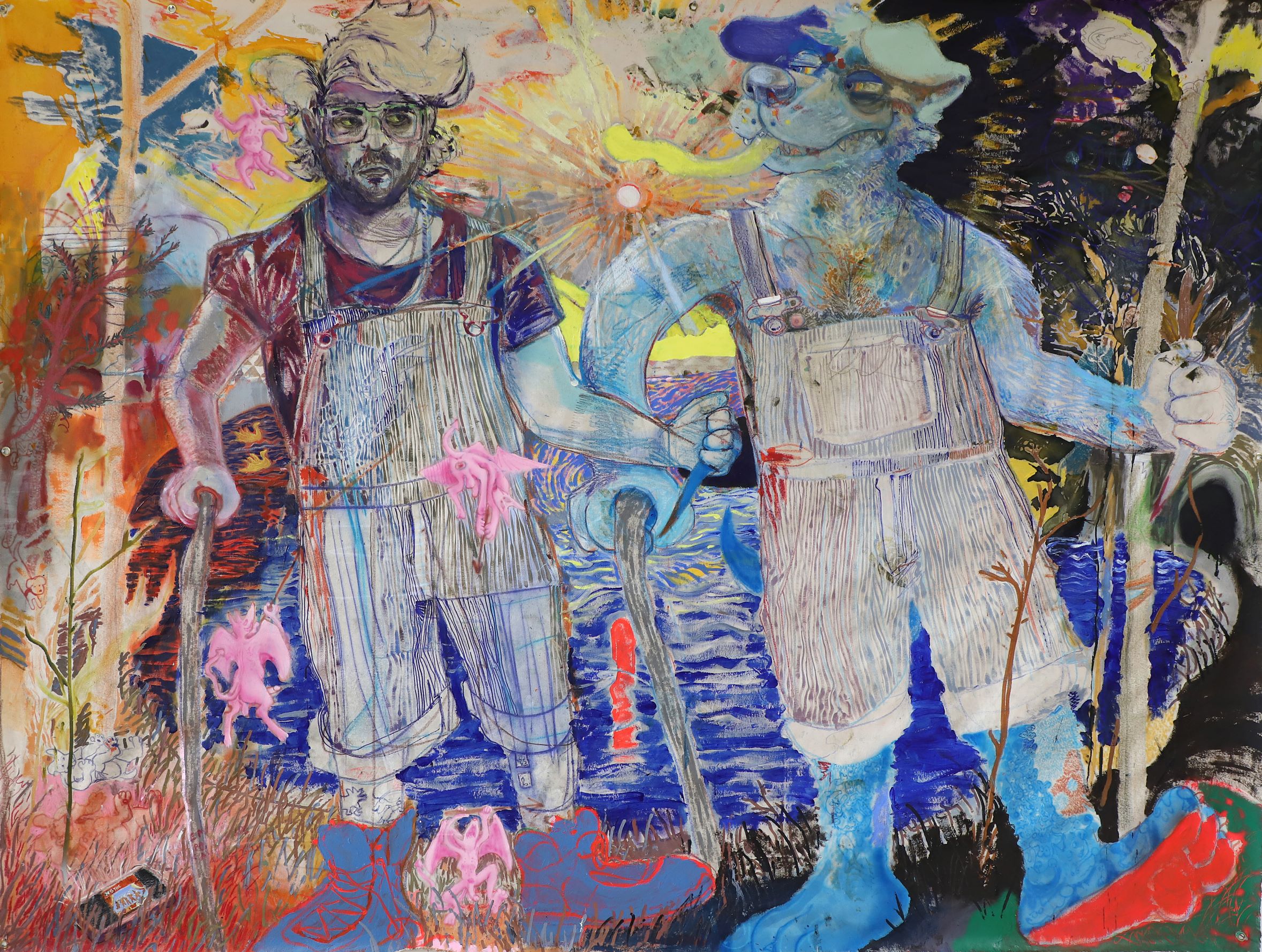
If you could choose any city around the world to do a residency in, where would it be?
I’ve daydreamed about going to San Juan and drawing all the friendly wild dogs that live on the beaches. In the complete opposite direction, I’ve also daydreamed about a residency in Anchorage or another major Alaskan city focused on the relationship between sled dogs and mushers. Also, I’d kill to do a residency in southern Japan.
How has your experience on this residency influenced your wider practice?
A huge takeaway from these last few months has been the ability to be less precious with the work. Leave preciousness to the art handlers and conservators! There were times in the space where I’d be so frustrated with a piece, but the freedom of movement that the space gave me enabled so many new paths of decision making. The freedom to take a giant unstretched painting, throw it on the ground, use it as a tarp for a month, then pin it back up on a different wall to resolve it, was massive.
Emily Steer is Elephant’s editor
